NZFFA Member Blogs
Member Blogs
Recent blogs:
Not all doom and gloom for alternative species
John Fairweather's blogWednesday, December 23, 2015
The last issues of the North Canterbury branch newsletter covered some interesting issues associated with growing and harvesting alternative species. Two points stuck out to me. One was that there is a need for specialist small-block harvesting equipment. The other was that currently it appears that alternative species do not make a commercial case on financial and traditional timber grounds.
I agree that growing and harvesting alternative species is not as easy as one would like. I can attest in my own case that blackwoods on my site may not be as viable as radiata. However there are some considerations that, if valid, suggest that there is still scope for optimism about alternative species grown for traditional production goals.
First, there is clearly a need for small-block harvesting equipment. I know of some farmers with trees to harvest that are reluctant to get the professional loggers in because they do not want a large clear fell. Purchasing one’s own small-scale harvesting gear, such as a Fransgard winch which would allow them to minimise harvesting costs, is not a priority among all the other pastoral farming demands. We need contractors with the right gear to safely harvest small but usable volumes. I expect that there are farmers and other landowners with small woodlots who approach the traditional loggers, and no action is taken because the volume is too small to be economic for traditional gear – now typically 20 tonne diggers with harvesting heads etc. Another benefit of a contractor with technology appropriate for small volumes is that woodlots could be selectively harvested. This would give the grower income over a number of years. It would also better suit my scale of production where I need smaller volumes throughout the year.
Second, I am paying $70-90 per tonne for good quality eucalyptus or acacia logs, and these prices match radiata prices of similar quality, so the returns to growers are not all that bad. Admittedly, this is just for two species, and my total annual volume is low. However, the total volume needed may increase in the future, as I expect my small operation to expand. Others might also get into eucalypts or other alternative species, as the idea of actually using specialty wood gets more traction. The Specialty Wood Product Partnership research programme promises positive outcomes for eucalypts and other alternative species.
Increased demand for specialty woods will grow when their merits are better appreciated by architects, joiners and the general public. In fact, joiners tell me they would like to use real wood but customers are not aware of what is available and therefore do not ask for it. We need to address this fundamental lack of demand. Specialty wood people should be presenting their wares at home shows.
I hope my marketing efforts in future will go some way to generate increased demand for specialty woods.
As part of my marketing goals, I am planning a seminar next year to present to Christchurch architects and joiners recent post-graduate research on the economics of growing nitens, and the utility of nitens for furniture use. It is important to reach this audience in order to develop demand for using alternative species.
I can also report, at least for my customers, that there is an appreciation out there for real wood. It seems that people have an instinctive appreciation of wood and an awareness that they are lacking something by not having ready access to wood products. Generating demand may not be all that difficult.
Sawing fence posts from Eucalyptus maculata
Dean Satchell's blogSaturday, September 19, 2015
I planted a small stand of E. maculata (Spotted gum) 21 years ago in Northland, after being really impressed with an old stand of trees that were milled by David Davies-Colley of Eucqual sawmills. The timber was superb and so seed was collected and subsequently planted.
Eucalyptus maculata is a durable eucalypt species with a high quality decorative timber. The timber is extremely strong and heavy and used for heavy engineering applications in Australia on account of its strength. It is also very tough and used for tool handles because of its high impact strength. It is also favoured for flooring and is extremely hard.
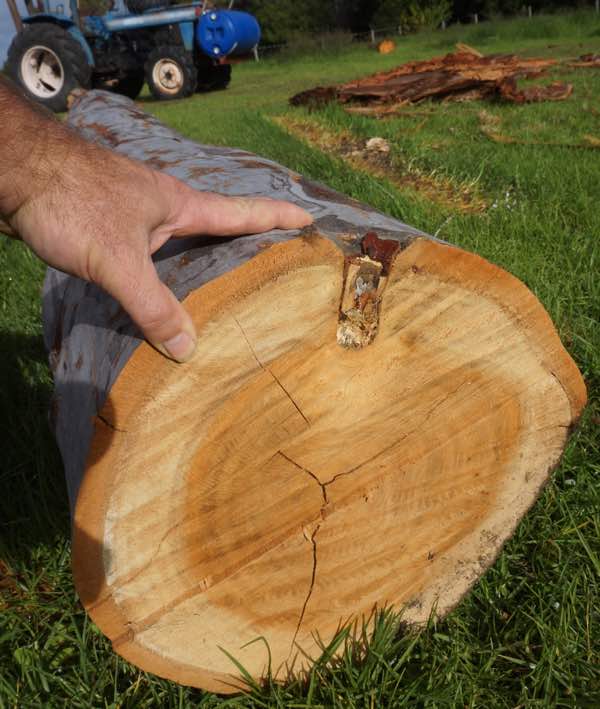
E. maculata headlog showing typical heartwood content expected for 20 year old trees.
A couple of trees blew down in a big storm we had a year ago, so Li Legler and I milled them up on his woodmizer. The pruned buttlogs were sawn into boards, but the headlogs were too small for sawing boards. Knowing that E. maculata is a durable eucalypt species, and noting that the hearwood content was reasonable in trees of this age, we decided to saw these smaller logs into posts and estimate the costs of producing these.
We cut the biggest buttlog that was pruned to 5m into two lengths (2.5 m long and 45 cm sed, 2.4 m long and 42 cm sed) and got plenty of good quality clearwood because these logs were pruned well and had a small DOS (Diameter over Stubs). Where the smaller logs were straight and between 30 cm and 20 cm SED (small end diameter), these were selected for milling into posts. The smaller logs were each sawn into four posts by quartering the logs, then milling the sapwood off into square posts. The quality of these posts was good, with some residual curve on the inner two faces. This was the most efficient method we could come up with that met our quality standards for a marketable product with two straight faces.
The average time to saw 4 posts from logs 20 cm - 30 cm SED was only 7 minutes from loading to completion of milling. The 20 cm logs produced 8cm width square heartwood posts and the larger logs 10 cm posts. Post (and log) length was 2.4 m, but longer posts could potentially be milled provided the sawyer accepts more waste and larger diameters are used.
At least 30 posts could be produced per hour using a woodmizer bandsaw, and at $100 per hour the production cost is $3.33 per post. There is no doubt in my mind that this cost could be reduced as efficiency gains would be likely in a commercail setting. The slabwood should produce some revenue as E. maculata is one of the best firewoods in existence.
Provided there were a market for the product, it certainly looks viable to be cutting posts from small diameter headlogs of durable eucalypt species once they get to 20 years old and have sufficient heartwood and diameter to be cutting square posts. My impression is that it is looking viable to be harvesting durable eucalypts in 20-30 year rotations, provided there are markets for high-density sawn timber, posts and firewood.
These posts are much heavier than CCA treated radiata posts, and I hear that square posts are more difficult to drive because for good appearance they need to be kept "square". I assume that moder battery drills would be used for fixings rather than nails, which might be problematic given the hardness of high-density eucalypt.
I'd be really interested to hear about others experiences, especially with utilisation of square heartwood eucalypt posts.
Dean Satchell
Sustainable Forest Solutions
Northland
021 2357554
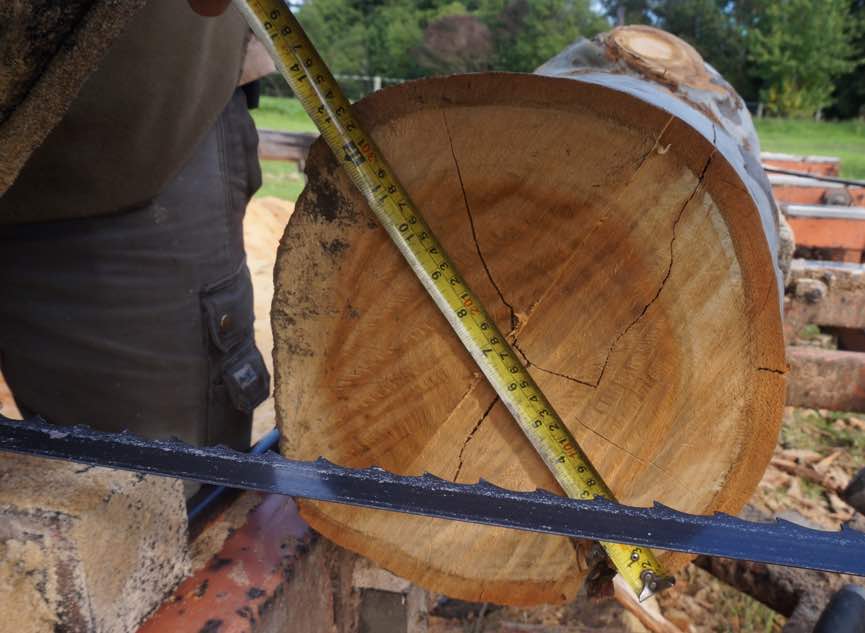
30 cm SED log on the bench ready for quartering. The sapwood is approximately 6 cm of the diameter.

This cut shows the bark, then sapwood, then strong contrast between sapwood and heartwood.
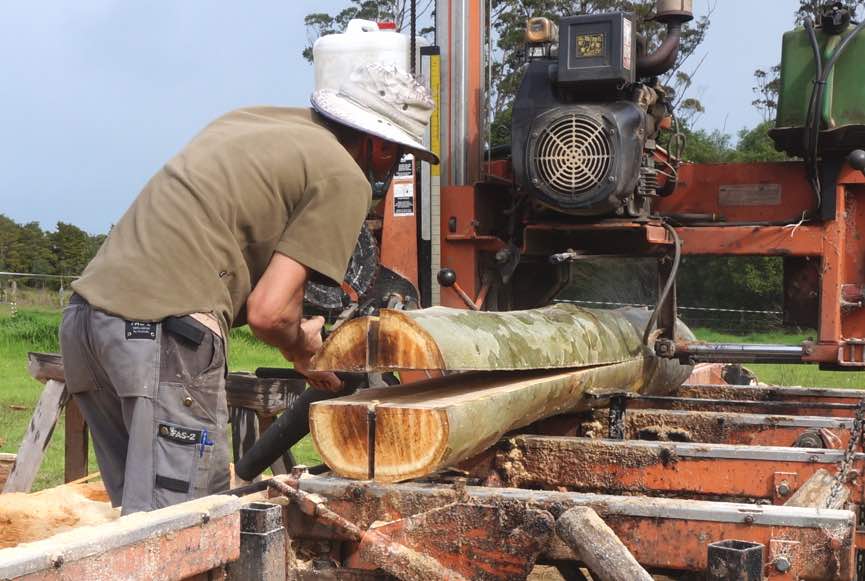
Quartering a small log
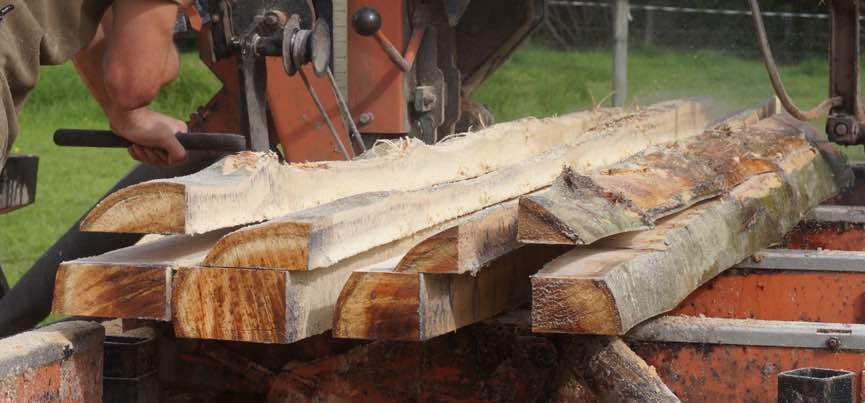
Straight cuts to remove the sapwood
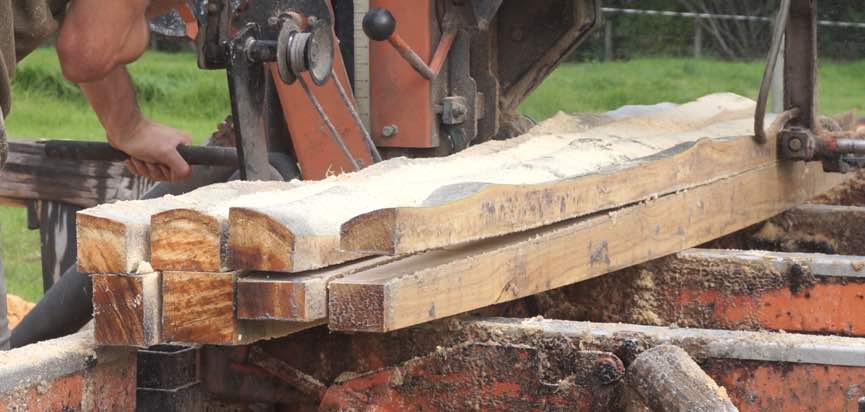
Final cut to produce square heartwood posts with two straight faces.
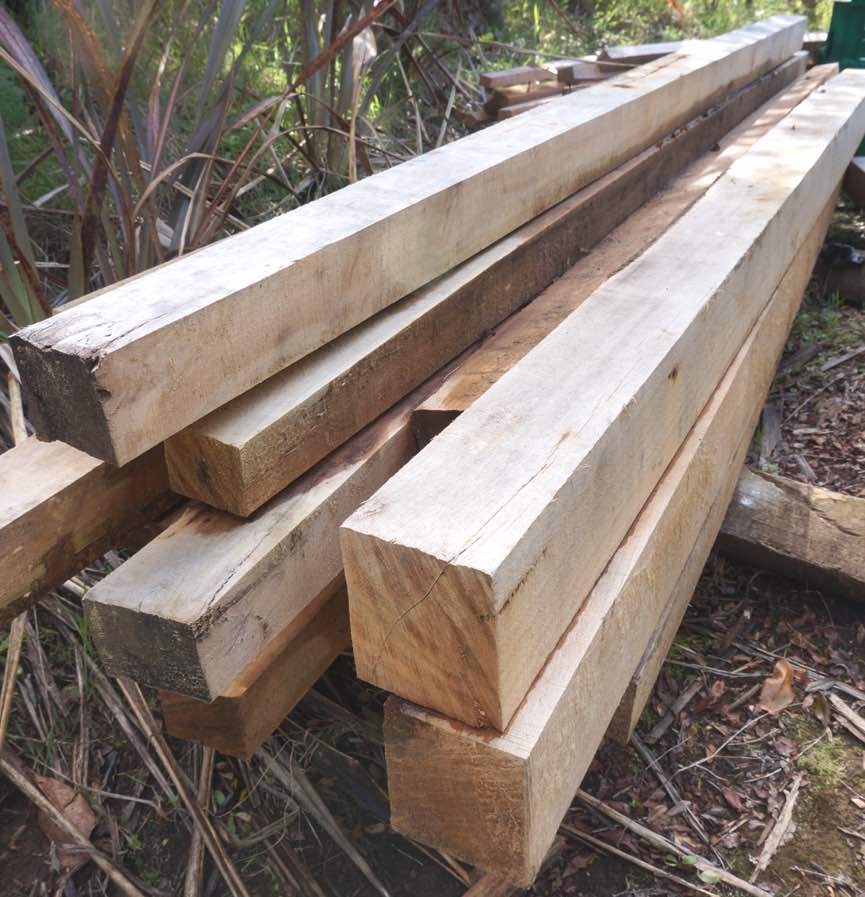
E. maculata posts (10cm x 10cm and 8cm x 8cm)
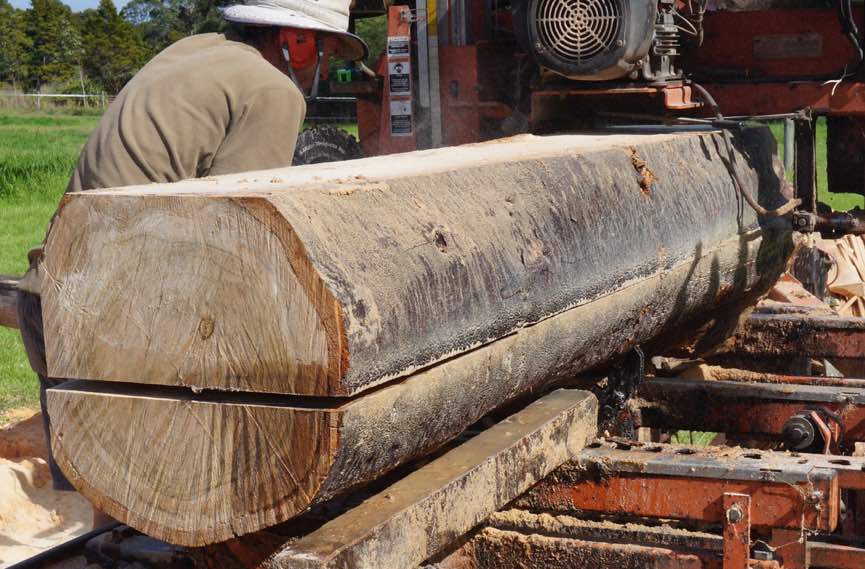
Larger buttlog being sawn through the pith in preparation for sawing boards

Second short buttlog being sawn. A single 5m log would have resulted in too much movement over the full length.
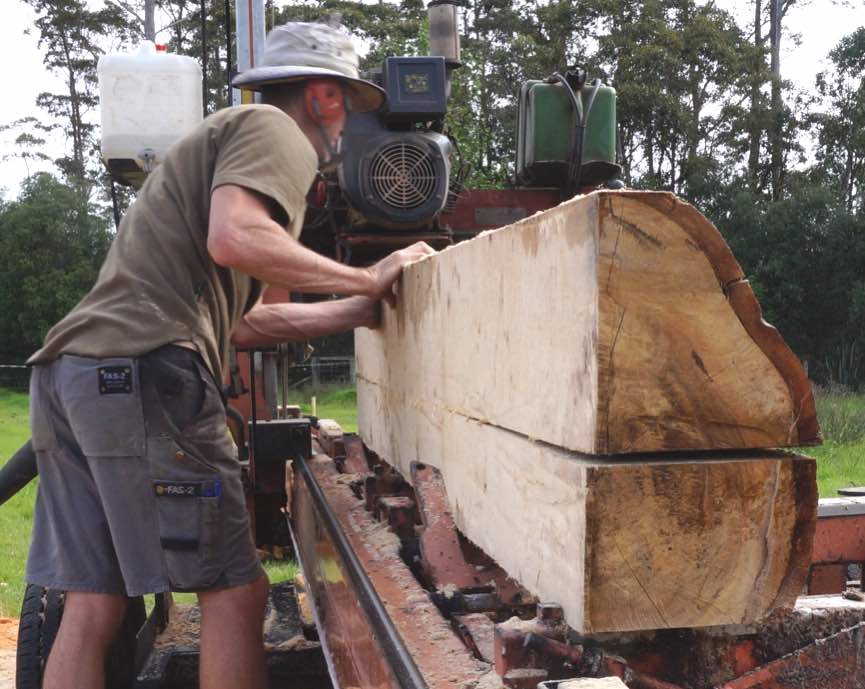
Two quarters ready for slabbing and edging.
Disclaimer: Personal views expressed in this blog are those of the writers and do not necessarily represent those of the NZ Farm Forestry Association.
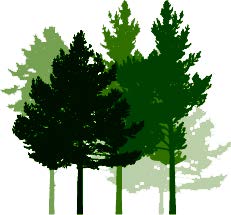
 Specialty Timbers New Zealand
Specialty Timbers New Zealand